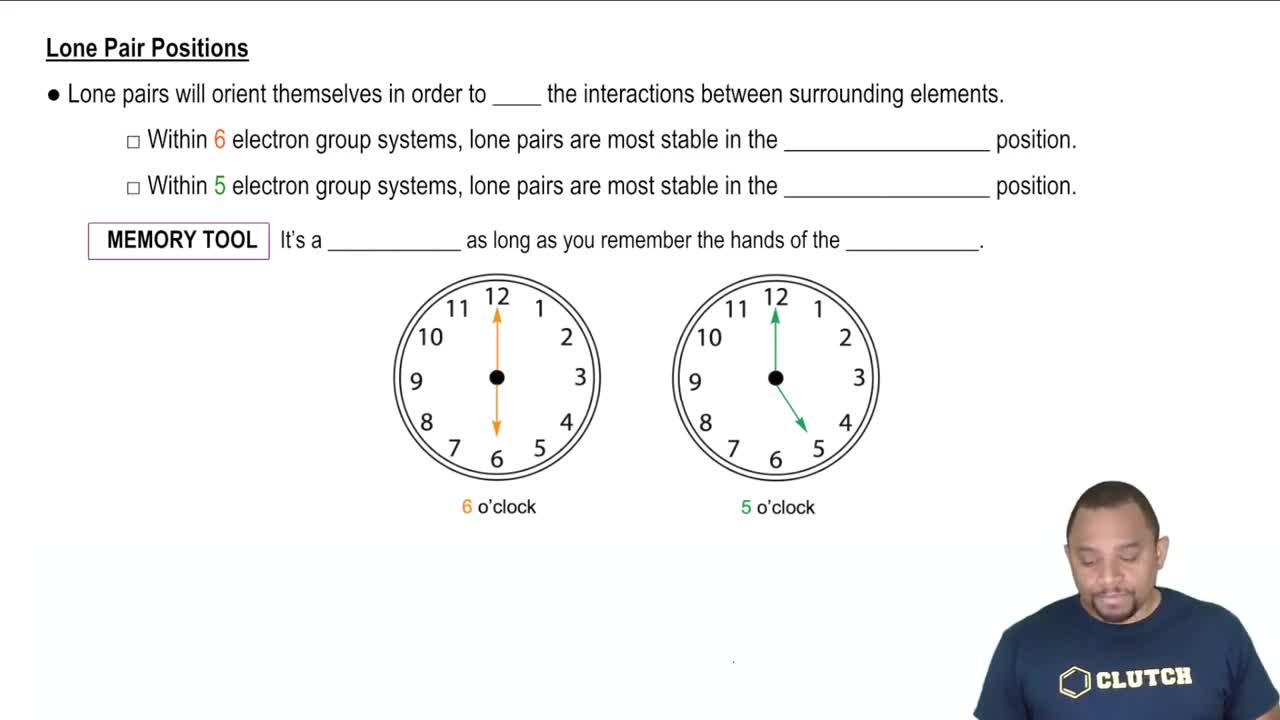Consider the reaction: SO2Cl2(g) ⇌ SO2(g) + Cl2(g) Kp = 2.91⨉103 at 298 K In a reaction at equilibrium, the partial pressure of SO2 is 137 torr and that of Cl2 is 285 torr. What is the partial pressure of SO2Cl2in this mixture?
Ch.16 - Chemical Equilibrium

Chapter 16, Problem 45
Consider the reaction: H2(g) + I2(g) ⇌ 2 HI(g). A reaction mixture in a 3.67-L flask at a certain temperature initially contains 0.763 g H2 and 96.9 g I2. At equilibrium, the flask contains 90.4 g HI. Calculate the equilibrium constant (Kc) for the reaction at this temperature.
 Verified step by step guidance
Verified step by step guidance1
Convert the initial masses of H2 and I2 to moles using their molar masses: \( \text{moles of } H_2 = \frac{0.763 \text{ g}}{2.02 \text{ g/mol}} \) and \( \text{moles of } I_2 = \frac{96.9 \text{ g}}{253.8 \text{ g/mol}} \).
Convert the mass of HI at equilibrium to moles using its molar mass: \( \text{moles of } HI = \frac{90.4 \text{ g}}{127.9 \text{ g/mol}} \).
Determine the change in moles of HI from the initial state to equilibrium, and use stoichiometry to find the changes in moles of H2 and I2.
Calculate the equilibrium moles of H2 and I2 by subtracting the change in moles from their initial moles.
Use the equilibrium concentrations (moles/volume) of H2, I2, and HI to calculate the equilibrium constant \( K_c = \frac{[HI]^2}{[H_2][I_2]} \).
Key Concepts
Here are the essential concepts you must grasp in order to answer the question correctly.
Equilibrium Constant (Kc)
The equilibrium constant (Kc) is a numerical value that expresses the ratio of the concentrations of products to reactants at equilibrium for a reversible chemical reaction. It is calculated using the formula Kc = [products]^[coefficients] / [reactants]^[coefficients], where the concentrations are in molarity. A larger Kc indicates a greater concentration of products at equilibrium, while a smaller Kc suggests that reactants are favored.
Recommended video:
Guided course

Equilibrium Constant Expressions
Stoichiometry
Stoichiometry involves the calculation of reactants and products in chemical reactions based on the balanced chemical equation. It allows us to determine the moles of substances involved in the reaction, which is essential for calculating concentrations. In this case, converting the masses of H2 and I2 to moles is necessary to find their concentrations in the equilibrium expression.
Recommended video:
Guided course

Stoichiometry Concept
Equilibrium Position
The equilibrium position refers to the state of a reversible reaction where the rates of the forward and reverse reactions are equal, resulting in constant concentrations of reactants and products. Understanding the initial concentrations and the changes that occur as the reaction reaches equilibrium is crucial for calculating Kc. In this scenario, knowing the amount of HI at equilibrium helps in determining how much H2 and I2 remain.
Recommended video:
Guided course

Lone Pair Positions
Related Practice
Textbook Question
Textbook Question
Consider the reaction: NH4HS(s) ⇌ NH3(g) + H2S(g) At a certain temperature, Kc = 8.5⨉10-3. A reaction mixture at this temperature containing solid NH4HS has [NH3] = 0.166 M and [H2S] = 0.166 M. Will more of the solid form or will some of the existing solid decompose as equilibrium is reached?
Textbook Question
Silver sulfate dissolves in water according to the reaction: Ag2SO4(s) ⇌ 2 Ag+(aq) + SO42-(aq) Kc = 1.1⨉10-5 at 298 K. A 1.5-L solution contains 6.55 g of dissolved silver sulfate. If additional solid silver sulfate is added to the solution, will it dissolve?
